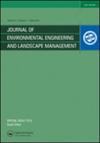锌污染对两栖动物的风险被低估:对林蛙蝌蚪的毒性评估
IF 1.1
4区 环境科学与生态学
Q4 ENVIRONMENTAL SCIENCES
Journal of Environmental Engineering and Landscape Management
Pub Date : 2021-12-28
DOI:10.3846/jeelm.2021.15814
引用次数: 3
摘要
水生环境经常受到锌的污染。两栖蝌蚪很可能暴露在这些环境中高浓度的锌中。我们在实验室条件下测定了ZnCl2对林蛙蝌蚪的急性和亚慢性毒性。ZnCl2在暴露24、48、72和96小时时的LC50值分别为5.81、4.32、3.79和3.61 mg/L。长期暴露于亚致死浓度的ZnCl2以浓度和时间依赖的方式诱导显著的死亡率。亚致死性ZnCl2暴露显著改变了变态时的存活率、体长和体重。微核试验和彗星试验表明ZnCl2具有遗传毒性。在ZnCl2暴露后观察到DNA链断裂的显著增加,相当于24小时LC50值的1%。研究结果表明,生活在受锌污染的水生环境中的蝌蚪可能会受到不良影响。此外,这些发现可能被推断为具有类似麻痹状态的水生生物。本文章由计算机程序翻译,如有差异,请以英文原文为准。
ZINC CONTAMINATION IS AN UNDERESTIMATED RISK TO AMPHIBIANS: TOXICITY EVALUATION IN TADPOLES OF FEJERVARYA LIMNOCHARIS
Aquatic environments are often contaminated with zinc. Amphibian tadpoles are likely to be exposed to high concentrations of zinc present in these environments. We determined the acute and sub-chronic toxicity of ZnCl2 on Fejervarya limnocharis tadpoles under laboratory conditions. The LC50 values of ZnCl2 were found to be 5.81, 4.32, 3.79 and 3.61 mg/L at 24, 48, 72 and 96 h of exposure respectively. Long-term exposure to sub-lethal concentrations of ZnCl2 induced significant mortality in concentration and time dependent manner. Sub-lethal ZnCl2 exposure significantly altered survival, body length and body weight at metamorphosis. Micronucleus test and comet assay indicated the genotoxic potential of ZnCl2. Significant increase in DNA strand break was observed following ZnCl2 exposure equivalent to 1% of the of 24 h LC50 value. The findings indicate possible adverse to tadpoles inhabiting aquatic environments contaminated with zinc. In addition, the findings may be extrapolated to aquatic organisms of similar torphic status.
求助全文
通过发布文献求助,成功后即可免费获取论文全文。
去求助
来源期刊
CiteScore
1.90
自引率
7.70%
发文量
41
审稿时长
>12 weeks
期刊介绍:
The Journal of Environmental Engineering and Landscape Management publishes original research about the environment with emphasis on sustainability.

 求助内容:
求助内容: 应助结果提醒方式:
应助结果提醒方式:


